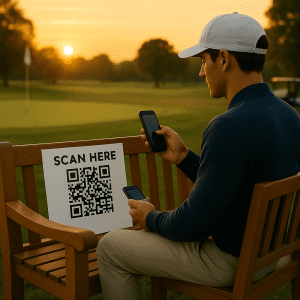Car Advertising Billboard: Once Iconic, Now Just Background Noise?
For decades, car advertising billboard campaigns have been a staple of auto marketing. Positioned along highways or in bustling cityscapes, these towering displays aimed to stop traffic—literally and figuratively—with bold car visuals and sharp slogans. But in today’s urban environments, where the visual landscape is saturated with messages, how effective is a car ad billboard really?
Spoiler alert: not very.
In this blog, we dive into why the traditional car advertisement billboard is rapidly losing its edge in high-clutter metropolitan spaces and what marketing professionals should consider as a smarter, more engaging alternative.
Car Advertising Billboard Visibility: Lost in the Visual Noise
Imagine Times Square, downtown LA, or Chicago’s Magnificent Mile. These places are teeming with billboards, flashing signs, and digital ads layered on top of each other. While the car ads billboard might still be present, it often disappears into the background.
Here’s why:
Oversaturation: There are simply too many ads in a small space.
Viewer fatigue: People learn to ignore billboards out of habit.
Competing distractions: Mobile devices, traffic, and urban chaos pull attention elsewhere.
For a car advertisement billboard to work, it needs time, space, and attention—all of which are scarce commodities in cluttered urban centers.
The Cognitive Cost of Cluttered Billboard Environments
From a neuroscience perspective, clutter taxes the brain. Urban consumers face an overwhelming amount of visual input daily. Adding a car ad billboard to an already crowded skyline might register subconsciously, but rarely resonates.
This sensory overload leads to:
Reduced ad recall
Lower emotional engagement
Minimal differentiation between brands
In short, your billboard may be seen—but it likely won’t be remembered.
Car Ads Billboard: High Cost, Low ROI
Let’s not forget the price tag. A premium car advertising billboard in a top urban market can cost tens of thousands per month.
But with limited attribution tools, marketers are left asking:
How many people actually noticed it?
Did it lead to a test drive or sale?
Was it more effective than digital or in-hand campaigns?
Without clear answers, it’s hard to justify the spend.
When a Car Ad Billboard Becomes a Missed Opportunity
Many auto brands think big is better. But size doesn’t always equal impact.
Consider:
A car ad billboard showcasing a luxury vehicle may appear in a neighborhood with no relevant buyers.
Static visuals can’t demonstrate the dynamic experience of driving.
Urban placements often face obstructions: trees, buses, or newer digital ads.
Meanwhile, newer competitors are using smarter, more targeted strategies to gain market share.
Car Advertisement Billboard vs. In-Hand Advertising: A Shift in Strategy
In today’s attention economy, context matters as much as content.
Enter in-hand advertising by Adzze.
Instead of relying on fleeting roadside glances, Adzze delivers brand messaging directly into consumers’ hands via:
Coffee sleeves in boutique cafés
Bar coasters in upscale lounges
This method puts your car advertisement in front of targeted, relaxed, and receptive audiences.
Benefits over a traditional car advertising billboard:
Higher engagement during leisure moments
Trackable responses via QR codes or promos
Geo-targeted precision—no wasted impressions
Real-World Engagement: The Power of Touch
While a car ads billboard is passively viewed (if at all), in-hand advertising is actively received. Consumers must pick it up, hold it, and decide what to do with it. That physical interaction boosts:
Brand recall
Message retention
Word-of-mouth sharing
Imagine someone discovering a QR code on a coffee sleeve that opens a 360° virtual test drive or a dealership discount. That’s memorable.
Car Advertising Billboard Myth vs. Reality
Myth | Reality |
Bigger billboard = bigger impact | More clutter = less visibility |
Everyone sees it | Most people ignore or forget it |
Best way to build brand awareness | Least personalized and least trackable format |
Billboards are iconic | They’re expensive monuments to unmeasured impact |






